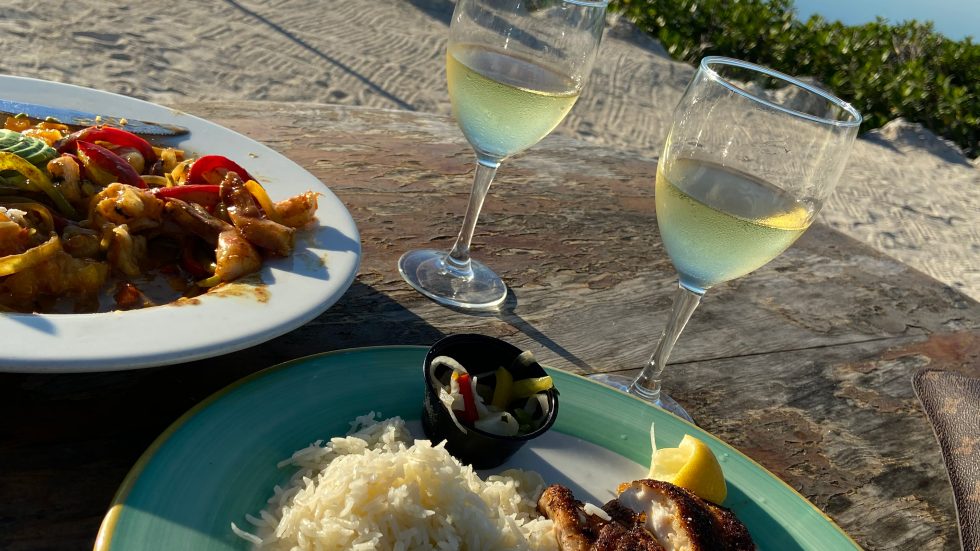Greg Arlotta’s voice turned grim as the boat beneath him slipped below the 37-degree waters of the Delaware Bay in the early morning darkness of Dec. 23, 2010.
“When this [cell] phone gets wet, I’m dead,” Arlotta told a 911 operator in the Sussex County, Del., Emergency Operations Center.
Arlotta’s foreboding was prophetic. He drowned some time that morning before rescuers could reach him. Unfortunately, Coast Guard boats and helicopters were delayed precious minutes because Arlotta and the mate aboard the Sea Wolf called the wrong people with the wrong technology. Instead of hailing the Coast Guard on a VHF-FM radio at the first sign of distress, they waited until that was no longer an option and dialed 911 on their cellular phones.
“911 operators do a great job, but they don’t always know the questions to ask” for a maritime search and rescue case, said Geoffrey Pagels, a Fifth Coast Guard District Search and Rescue Specialist based in Portsmouth, Va. “A Coast Guard watch-stander can get the necessary information right away…and if he has the information in his hands immediately, there can be a helicopter spinning in 5 to 10 minutes.”
“There is no time to lose. Every moment counts. I don’t care if it’s a half a minute.”
In this case, the nearest help was 31 minutes away by boat and 36 minutes away by air. Pagels estimates only 67 minutes separated Arlotta from unconsciousness and then death. As hypothermia started overwhelming Arlotta’s ability to stay alert, 13 precious minutes passed as operators attempted to get the Coast Guard on the phone and pass along the appropriate information.
“Is anyone injured?” asked the 911 operator.
“No, not yet,” said Arlotta portentously.
There’s no app for that
Cellular devices seem capable of doing almost anything thanks to the advent of smartphones and downloadable applications. This versatility and cell phones’ portability are leading many recreational boaters to have too much faith in them as the sole means of communication on the water, especially in emergency situations.
In fact, Arlotta’s death following the sinking of the Sea Wolf is part of an alarming trend of maritime cell usage that Pagels and other Coast Guard personnel say is complicating search and rescue cases.
“Cell phones may have gaps in coverage, especially in coastal waters,” leading to dropped calls and bad reception, explained Dennis Sens, the Fifth Coast Guard District’s Boating Safety Program Specialist. Though some phones are equipped with GPS transmitters, that capability may be misleading when it comes to locating a vessel in distress, said Sens.
“Even if cell phones have a GPS transmitter, tracking down a cell phone signal is a very involved process. We don’t have that capability in our command centers, and that information is not easily obtainable from the cell phone companies because of privacy concerns. All this research takes time, and during this process, things are happening on the water.”
Even though VHF-FM radios are not required by law to be carried on board a boat, Sens and Pagels recommend all recreational boaters, even in the smallest vessels, not leave the dock without one and use it at the first sign of distress. Calling 911 with a cell phone should not be ruled out in case of an emergency, but both experts agree that using a VHF-FM for distress calls is a surer way to get the help you need, faster.
“VHF is your direct link to the Coast Guard because the watch-standers at small boat stations and at the [command centers] monitor those radio channels,” said Sens. “You’ll be talking directly to the element of the Coast Guard that launches boats and planes,” and that watch-stander can speak with you to get more information.
Moreover, Pagels said, other nearby commercial and recreational vessels may be monitoring the airwaves and can lend a hand or communicate directly with the vessel in distress.
Can you hear me now?
VHF-FM radios come in handheld models, similar in appearance to walkie-talkies, and fixed-mount units that can be installed in or above a boat’s dashboard. Regardless of choice, VHF-FM technology makes these radios more suitable for a marine environment than a cell phone.
Like cell phones, VHF-FM radios use line-of-sight transceivers to transmit and to receive information, but VHF signals are much stronger than the signals of most cell phones. Handheld VHF radios can transmit using up to 6 watts of power, and fixed-mount units transmit using up to 25 watts of power. Connect the radio to an antenna mounted on the bridge or to the roof of a boat, and now the VHF has a range of up to 25 to 30 miles, said Coast Guard Senior Chief Petty Officer Timothy Pendergrass, an electronics technician assigned to the Coast Guard’s Electronics Support Detachment in Portsmouth, Va.
“With cell phones, range depends on the manufacturer and where the tower is,” he explained. “But guys who take cell phones out in their boats don’t know that. There’s not a boundary line they draw in the water. They just go fishing and then realize they don’t have service anymore.”
In addition to VHF-FM’s greater range and reliability in offshore environments, VHF radio batteries typically have longer lives. Built-in units will power on as long as a boat’s battery supply remains functional, and the batteries for handheld VHF-FMs will last from seven to 20 hours depending upon the model and manufacturer. Pagels said that, in a pinch, a search and rescue controller could send text and receive text messages to a cell phone with a dwindling battery, but as the case of the Sea Wolf illustrates, every minute counts. Do you really have time to be using a keypad while sinking in water that is 37 degrees?
Taking the search out of search and rescue
Pagels said boaters would be particularly remiss not to take advantage of the new technology associated with VHF-FM that could expedite their rescue. He points to Rescue 21, the Coast Guard’s new direction-finding radio communications system, as an example.
“In the time it takes a boater to say ‘Mayday, Mayday, Mayday,’ and identify himself three times, we have a line of bearing that we can start searching right away. All Rescue 21 needs is more than three seconds of a transmission, and we’ll get it and send out a Urgent Marine Information Broadcast to alert other vessels on the water.”
That’s because Rescue 21 identifies the location of callers in distress via towers that can triangulate the source of a VHF radio transmission and generate lines of bearing to that signal. Furthermore, the range of Rescue 21 extends to at least 20 nautical miles from shore.
In contrast to the National Distress and Response System it replaced, Rescue 21 is also digital, which means it is compatible with Digital Selective Calling, a safety feature standard on all built-in VHF-FM radios manufactured after 2011 and a feature on some handheld units. At the touch of a button, a DSC-equipped VFH radio will send an automated distress call with a unique Maritime Mobile Service Identity number that is available for free online through BoatUS, Sea Tow and the U.S. Power Squadrons. Your vessel information will be sent automatically to other DSC-equipped vessels, as well as the Coast Guard. Connect the DSC-equipped VFH radio to your GPS, and it will also send your exact position to the Coast Guard.
But like any safety equipment, a DSC-equipped VHF-FM radio will not work if you’re not using it. If you can’t connect the GPS to the radio, have a professional do it for you, advised Pagels. However, “an MMSI is better than nothing, I’ll have a name and telephone number, so if I know who it is and what boat it is, we have a place to start.”
VHF-FM radio owners also need to re-register the MMSI if they buy a used radio or boat, lest an emergency transmission “result in the misleading shuffle, where we’re calling the old owner or looking for him or her” and not the boater in distress, added Pagels.
DSC-equipped radios cost less than one might imagine. Many, said Sens, are less than the cost of new smartphones. Given the comparable price but the incomparable advantages of VHF-FM, it seems that on the water, VHF is the smarter technology.





